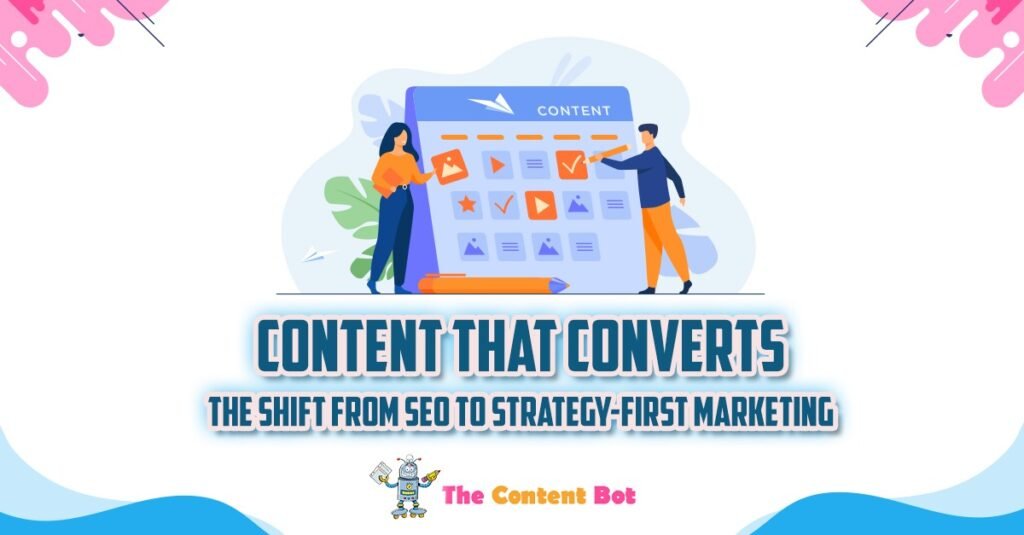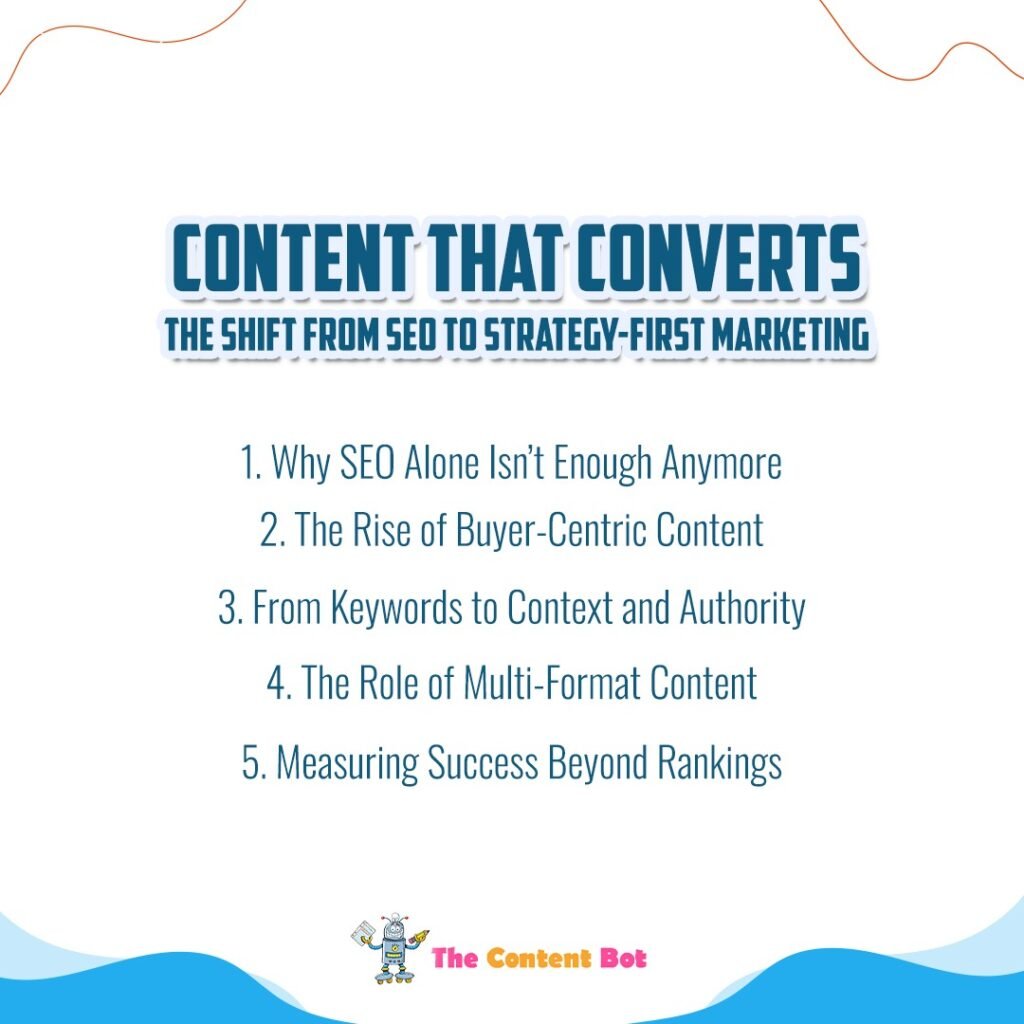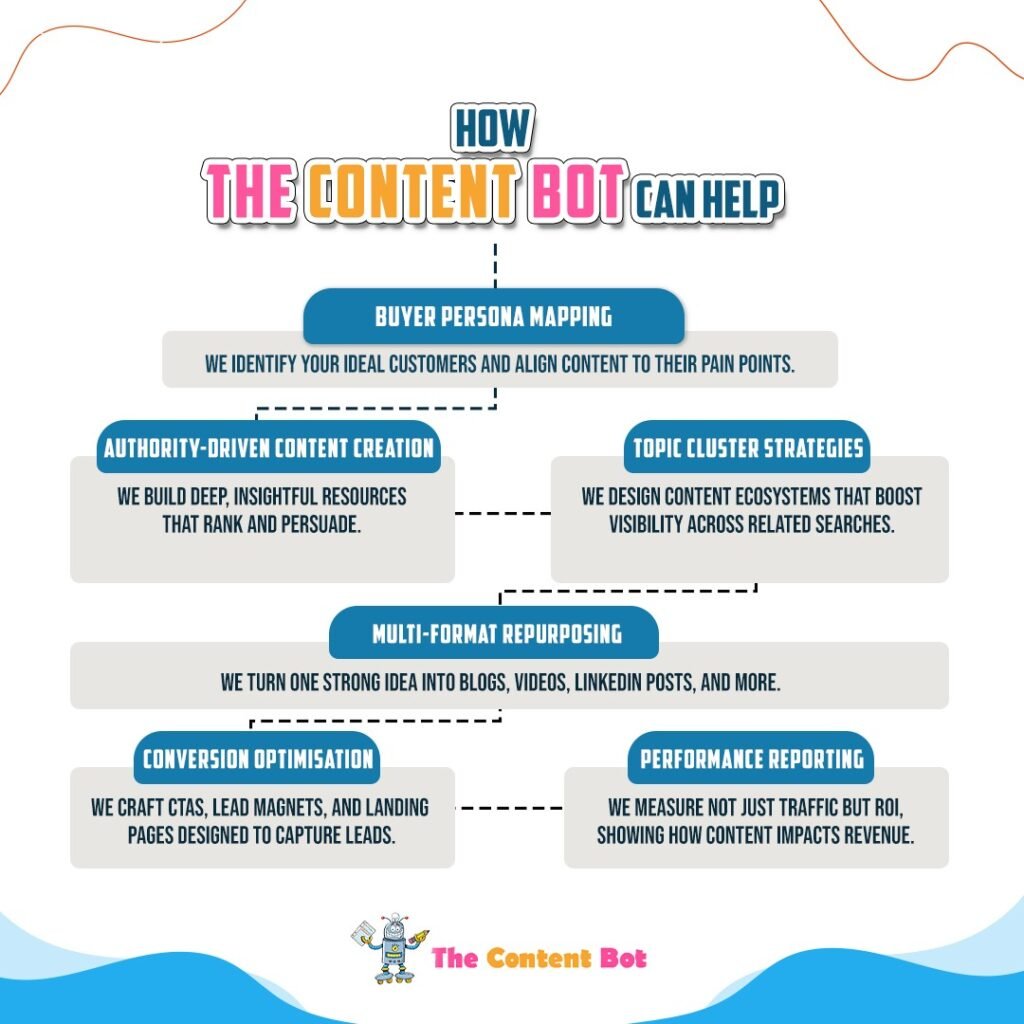
For years, SEO was treated like a checklist: insert keywords, build backlinks, and wait for rankings. But in 2025, that approach doesn’t cut it anymore. Search engines and buyers are smarter. What works now is strategy-first marketing: content designed not just to rank but to resonate, build trust, and convert. This blog explores the shift from keyword-first SEO to strategy-first content marketing that drives revenue.
1. Why SEO Alone Isn’t Enough Anymore
Ranking high doesn’t automatically equal leads. Too many businesses obsess over keywords while ignoring what happens after the click. If your content doesn’t solve problems or guide the buyer journey, traffic won’t convert into sales.
Key Insight: SEO gets attention, but strategy turns attention into action.
2. The Rise of Buyer-Centric Content
Modern buyers don’t want keyword-stuffed blogs they want insights, stories, and solutions. Strategy-first marketing starts by mapping buyer personas and creating content that speaks directly to their challenges. Content becomes less about ranking tricks and more about building trust.
Key Insight: Buyer-centric content aligns with intent, making it more persuasive and conversion-friendly.

3. From Keywords to Context and Authority
Search engines now prioritise semantic depth and authority. Strategy-first content doesn’t just chase one keyword it builds topic clusters, answers related questions, and demonstrates expertise. This not only improves rankings but also positions your brand as a thought leader.
Key Insight: Authority-driven content beats keyword-driven content in both rankings and conversions.
4. The Role of Multi-Format Content
Blogs are still powerful, but they’re not the only format. Buyers engage through videos, infographics, webinars, and LinkedIn posts. Strategy-first marketing repurposes content across formats, ensuring your message meets prospects where they are.
Key Insight: Diversifying content formats increases reach and maximises conversion touchpoints.
5. Measuring Success Beyond Rankings
Traditional SEO metrics focus on traffic and rankings. Strategy-first marketing measures success by leads generated, deals closed, and pipeline impact. This shift ensures content is tied directly to business outcomes, not vanity metrics.
Key Insight: The true measure of content is revenue impact, not just keyword rank.

How The Content Bot Can Help
At The Content Bot, we help businesses move from keyword-obsessed SEO to strategy-first content marketing that converts. Here’s how we do it:
- Buyer Persona Mapping -We identify your ideal customers and align content to their pain points.
- Authority-Driven Content Creation -We build deep, insightful resources that rank and persuade.
- Topic Cluster Strategies -We design content ecosystems that boost visibility across related searches.
- Multi-Format Repurposing -We turn one strong idea into blogs, videos, LinkedIn posts, and more.
- Conversion Optimisation -We craft CTAs, lead magnets, and landing pages designed to capture leads.
- Performance Reporting -We measure not just traffic but ROI, showing how content impacts revenue.
With us, content isn’t just created to “rank.” It’s built to connect, convince, and convert.
Frequently Asked Questions
1. Is SEO still important in 2025? Yes but it’s just the starting point. SEO opens the door, strategy ensures prospects walk through it.
2. What’s the difference between SEO content and strategy-first content? SEO content chases keywords. Strategy-first content answers intent, builds authority, and drives conversions.
3. Do I need to stop focusing on keywords entirely? No. Keywords still matter, but they’re part of a larger framework built on context, authority, and strategy.
4. Can strategy-first marketing work for small businesses? Absolutely. Smaller businesses often see faster ROI because they can focus content tightly on their niche.
5. How do I know if my content is converting? By tracking leads, engagement, and pipeline metrics not just rankings.
6. Is multi-format content necessary? Yes. Repurposing across formats helps you reach more prospects and maximise your content investment.
Here’s How This Helps
SaaS Firm’s Strategy Shift
A SaaS company ranked well for keywords but saw little ROI. After switching to buyer-centric, strategy-first content, demo requests increased by 60%.
Consulting Firm’s Authority Boost
A consulting firm built topic clusters around leadership training. Within months, they ranked higher and positioned themselves as industry experts.
E-Commerce Brand’s Multi-Format Win
An online retailer repurposed blog content into video guides and LinkedIn posts. Their engagement tripled, leading to more conversions.
Local B2B Supplier’s ROI Focus
A supplier stopped chasing vanity traffic and began measuring conversions. Within 6 months, content-driven leads accounted for 40% of new revenue.
SEO still matters, but it’s no longer the endgame. In 2025, content that converts is strategy-first: buyer-centric, authority-driven, multi-format, and measured by outcomes. At The Content Bot, we help businesses shift from chasing rankings to building strategies that drive growth. Stop obsessing over keywords. Start investing in content that actually moves the needle.

